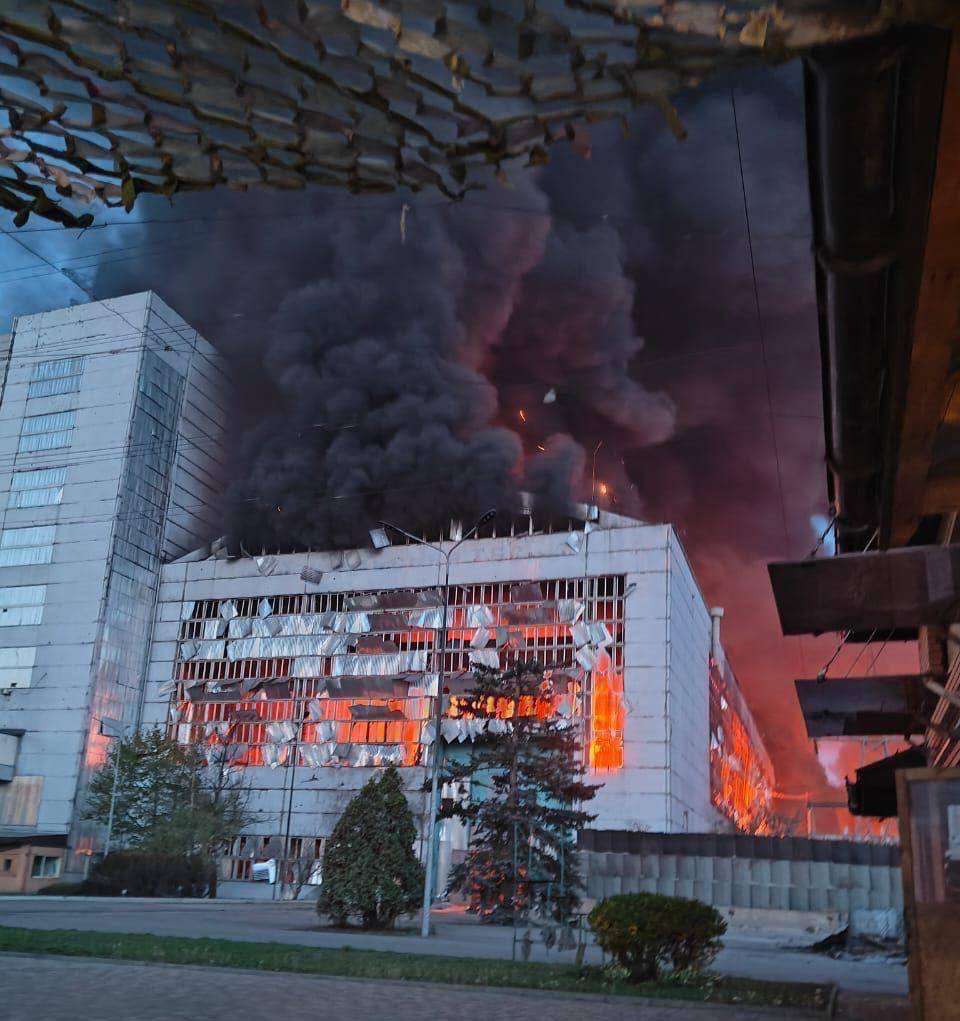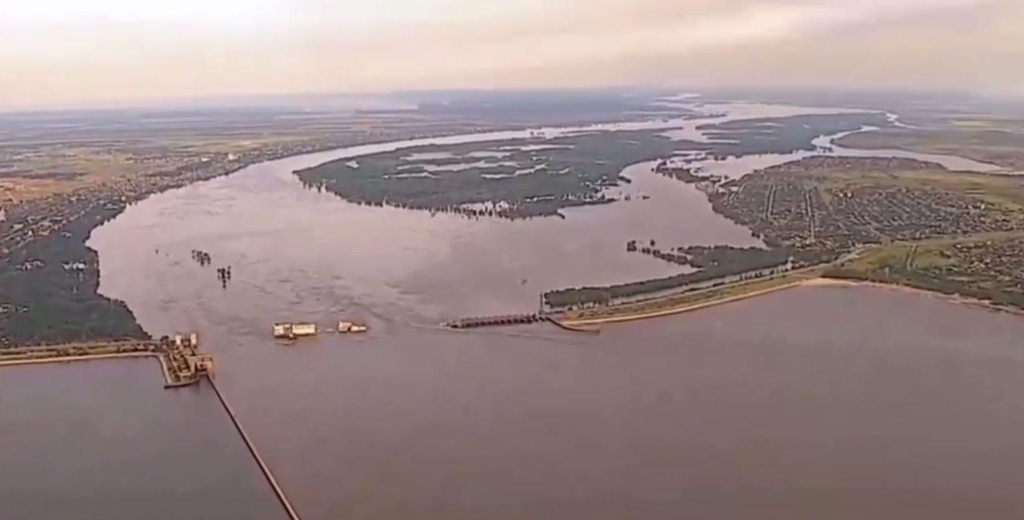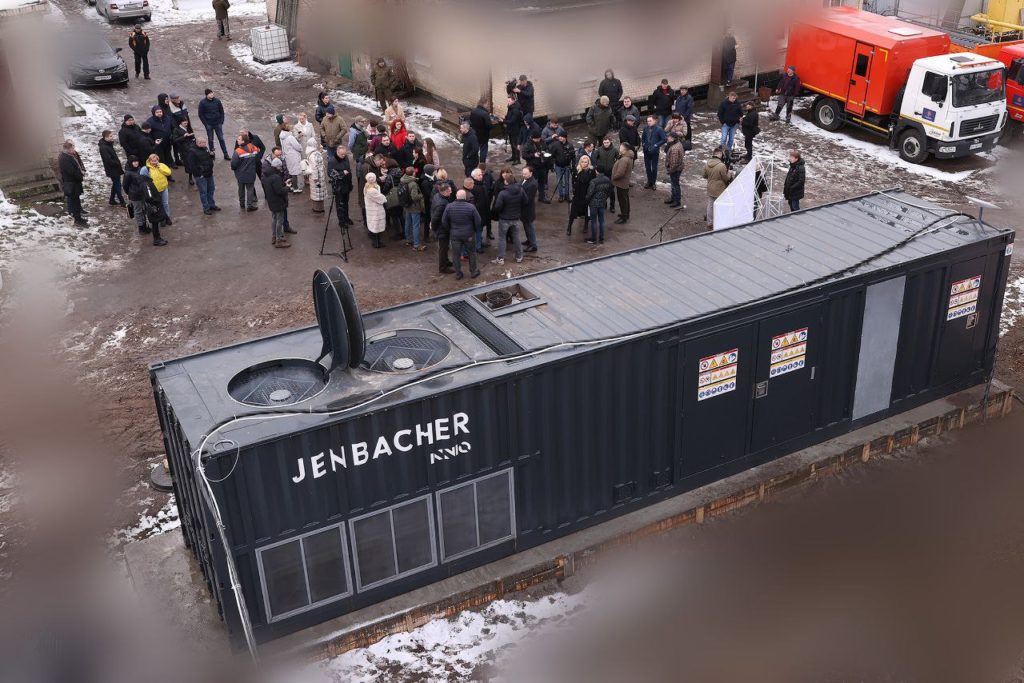Since March 2024, Ukraine has endured five devastating Russian strikes on its energy infrastructure.
Until March, the electrical grid had largely avoided the pounding that Russian forces inflicted in 2023, which brought the country to the brink of total electrical collapse. This was thanks to an air defense system that intercepted a large number of missiles and drones.
However, due to Western delays in arms deliveries, the air defenses have run low on ammunition, and Russian missiles are increasingly hitting their targets.
In contrast to the previous campaign against Ukraine's energy sector, which focused on destroying the electrical distribution grid, Russian forces are now directly targeting thermal and hydroelectric power plants.
Consequently, Ukraine has lost 70% of its available generation capacity, with only 14 gigawatts remaining out of the previous 36.7, Olena Pavlenko, an energy expert and director of the Ukrainian think tank DiXi Group, told Euromaidan Press.
"With Ukraine having lost 70% of its electricity generation, everyone is asking what can be done. Unfortunately, we've reached a point where there is no quick and easy answer," says Pavlenko.
DiXi Group estimates that Ukraine's losses in thermal power generation capacity could reach up to 85%.
Euromaidan Press consulted experts to better understand the situation, the state of restoration efforts, and the specific needs.

Billions in damages, millions in aid
Russian attacks have caused $12.5 billion in damage to Ukrainian energy infrastructure, according to Andrii Gerus, Chairman of the Ukrainian parliament Committee on Energy Issues.
To facilitate the restoration of Ukraine's energy system, the Ministry of Energy of Ukraine and the European Commission established the Ukraine Energy Support Fund in April 2022. The Fund, managed by the Energy Community Secretariat in Vienna, Austria, allows governments, international organizations, and corporate donors to provide financial support to Ukraine's energy sector.
As of May 2024, the Fund has received approximately €400 million ($434 million), with the five largest donors being:
- Germany - nearly €200 million
- EU - €63 million
- Britain - €50 million
- Denmark - almost €17 million
- Austria - €15 million.
The Fund provides monthly procurement reports through infographics.

While Ukraine also receives assistance through embassies, charitable foundations, and organizations, there are no publicly available consolidated statistics.
It is evident that the incoming aid is insufficient compared to the losses incurred.
"Based on public information, we have no good news yet. There may be positive developments happening behind the scenes that we don't know about, but looking at the current situation, I have no reason to deliver good news," says Olena Pavlenko, an energy expert and director of the Ukrainian think tank DiXi Group.
Restoration = equipment + air defense
The number of power stations Ukraine can restore before autumn depends on two factors.
First, the quantity and type of equipment Ukraine receives will determine its restoration capacity. If expensive turbines and other critical components are delivered quickly, Ukraine can restore some power stations, although not to pre-war levels.
Ukraine's most urgent needs are complex, as Russians target both power generation and transmission lines.
"We need everything from transformers and cables to pylons and repair vehicles for electrician crews," says Pavlenko.
Thermal and hydroelectric power plants require large turbines, spare generators, and even control room electronics.
This used to be the control room of a fully functioning @dtek_en power station, supplying energy to Ukrainian homes, businesses, hospitals and schools. Today I saw up close how russia has reduced it to ashes: a truly terrible level of damage from missiles and drones against a… pic.twitter.com/biB2acliDQ
— Maxim Timchenko (@TimchenkoMaxim) April 2, 2024
DTEK, Ukraine's largest private electricity company, has launched a campaign asking countries to donate used equipment they no longer need. The electricity equipment that can be used in Ukraine is primarily located in the post-Soviet countries of Eastern Europe, many of which have already started working on donating it.
The second factor is the availability of powerful air defense systems. On 11 April, Russia destroyed the giant Trypilska thermal power plant with Kh-69 cruise missiles. As President Volodymyr Zelenskyy later explained, it happened because Ukraine had completely run out of missiles for the air defense systems protecting the facility.
“Some 11 missiles were flying at the Trypilska power plant. Ukraine’s air defenses destroyed the first seven, and four destroyed the plant. Why? Because we had zero missiles left. We ran out of all the missiles to protect it,” Zelenskyy said.

He stated Ukraine urgently needs at least seven Patriot air defense systems, two of which are for the city of Kharkiv which Russia bombards daily.
Restoring large power stations without adequate protection is pointless, as Russians have demonstrated their ability to penetrate existing defenses, especially with combined attacks using drones, cruise missiles, and ballistic missiles.
Despite the pressing need for assistance, including air defense systems, the delivery of aid has been sluggish, with Western nations attributing the delays to regulations and bureaucratic processes. However, for Ukraine, where the situation is dire, these explanations ring hollow.
"If Western countries want to play politics, follow procedures, and everything else, then they should be prepared for the situation to worsen. If they want to provide real assistance, they need to prioritize aid deliveries as quickly as possible," emphasizes Pavlenko.
Blackouts and rationing
Ukraine has suffered the most losses in thermal power generation from coal-fired plants, which were essential for balancing the entire energy system. The Russians deliberately targeted these plants, knowing their importance.
“When everyone starts turning on lights, washing machines, boilers, and kettles in the morning or evening, consumption increases significantly. Thermal power generation covered these peaks. It could be quickly started up to meet the needs. Now we can't do this, hence the blackouts," explains Pavlenko.
Despite a one-third decrease in overall electricity demand (16% for consumers, 45% for industry), Ukraine's energy system struggles to meet the existing needs. Consumers face daily blackouts, with the worst situation in the heavily shelled eastern regions. Ukrenergo, the state energy provider, and regional energy companies (Oblenergos) determine blackout schedules in cooperation with the Ministry of Energy.
Throughout the summer, energy deficits are expected to peak in July, according to Roman Hrabchak, Head of the Balance Reliability Department at Ukrenergo.
"July is currently considered the most challenging month. This is when there is a lack of water for hydroelectric power plants, repairs are underway, and damaged thermal power plant equipment will not yet be restored in time," Hrabchak explained during the presentation of a study by the DiXi Group.
Industry suffers even more from blackouts as Ukraine prioritizes consumers, threatening the already war-contracted economy. The New York Times reported that intensified Russian attacks raise concerns about power cuts affecting Ukraine's defense industry, although Ukrenergo assured that the defense industry is protected and often has autonomous power sources.
Moreover, Ukrainian consumers have already faced a 50%+ electricity price hike, yet a stable power supply remains elusive.
Nuclear, hydro and imports keep Ukraine's lights on
Nuclear power, providing half of Ukraine's electricity, keeps the country's energy system afloat alongside European imports. However, nuclear plants must undergo scheduled maintenance during the summer to ensure continuous operation in winter when demand is higher.
"The challenge is getting through the summer when nuclear plants go offline for maintenance and preparation for winter," says Pavlenko.
Unlike countries that are abandoning nuclear energy, Ukraine plans to expand its nuclear power plants – a decision already made by the government. However, these will be a new type of nuclear power plant.
"These are small modular reactors, modern technologies that are very different from what we are used to. They are smaller, more localized, and faster to build. But not fast enough to help us prepare for the next winter," Pavlenko explains.
The Russian-occupied Zaporizhzhia Nuclear Power Plant (ZNPP) poses a separate challenge for Kyiv. The plant is connected to the Ukrainian power grid, which supplies electricity to the station's critical infrastructure.
"Ukraine feeds the ZNPP with a single power line that is constantly under fire. When cut off, the plant runs on local generators until the line is restored, which is crucial for the plant's safety and survival under occupation. We are trying to keep it in a safe mode," Pavlenko adds.
Hydroelectric power plants on the Dnipro and Dniester rivers are also crucial for balancing Ukraine's energy system. Despite the loss of the Dnipro Hydroelectric Station dam in Zaporizhzhia, hit by eight Russian missiles in March 2024, and the destruction of the Kakhovka Hydroelectric Station by the Russians in 2023, other hydroelectric plants continue to operate and stabilize the energy grid.

Bohdan Sukhetskyi, Commercial Director of Ukrhydroenergo, Ukraine's main hydropower generating company, explained the challenges faced in the restoration process.
"Ukrhydroenergo uses specific equipment that requires a long manufacturing time and significant funding. At present, some of the equipment, financed by international partners, is in the process of being manufactured," Sukhetskyi told Euromaidan Press.
Renewable energy cannot replace lost generation on its own, as it depends on external conditions and provides power only when there is sun or wind.
Electricity imports from EU countries are another crucial factor in keeping Ukraine's energy system afloat. Initially, it was expected that Ukraine would import electricity for emergency needs – when a need arose, Ukraine would request imports, import, and then stop. Now, it is almost constant importation.
"It's uncertain how this will be managed when electricity consumption and prices rise in Europe during hot weather. It's a formula with many unknowns," says Pavlenko.
Ukraine imports the maximum allowed by the system – 1.7 gigawatts, about 10% of its needs. This is the capacity limit; importing more is physically impossible.
Can gas piston units bridge the gap?
Ukraine is currently importing natural gas-powered solutions, such as gas piston units, at both the state and local levels. However, the procurement volumes are not disclosed for understandable reasons.
"I'm uncertain if we can purchase enough gas piston units to fully replace our lost thermal power generation and prepare for winter. We may cover needs in small areas, but there will likely still be territories where consumers experience shortages," says Pavlenko.
Gas piston units are far less powerful than thermal power plants like the massive Trypilska facility. While the Trypilska plant generated electricity and heat for three Ukrainian oblasts, gas piston units are much smaller and can only cover local needs in individual districts, towns, or villages. They cannot fully replace coal-fired generation.

Gas piston units may have been the key to Ukraine successfully navigating the winter of 2023/2024, although the exact details are unknown.
"The question remains: how many of these gas piston units and other small-scale solutions do we need to cover the entire country's needs?" Pavlenko adds.
Despite the challenges, gas piston units are part of the solution, and Ukraine has limited alternatives.
****
The outlook for Ukraine's energy system remains grim without an immediate surge in Western assistance. Existing aid is a drop in the bucket compared to the billions in damages. Prolonged inaction will deepen the crisis, causing further hardship for civilians and hampering economic and military efforts.
Read more:
-
- Energy Minister: Russia damaged 80% of Ukraine's thermal power plants, half of hydroelectric ones
- Ministry of Energy: Russian massive attack hit power facilities in six oblasts overnight, injuring at least 3 people
- Recent Russian missile strikes caused over $ 1 billion in losses to Ukraine's energy sector
- Belgium allocates € 9 mln for reconstruction of energy facilities in Ukraine
- Kharkiv receives US transformers amid energy crisis, says ambassador





